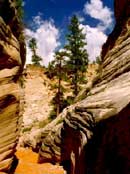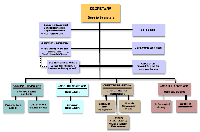
 |
DOI Quick Facts
Current
as of February 29, 2004
This page will be updated quarterly.
To view DOI Quick Facts as a single web page with fewer graphics, click here.
To view tables with numeric data for the Department and each bureau, click here.
 |
The Department of the Interior (DOI) is the nation’s principal conservation agency. Our mission is to protect America’s treasures for future generations, provide access to our nation’s natural and cultural heritage, offer recreation opportunities, honor our trust responsibilities to American Indians and Alaska Natives and our responsibilities to island communities, conduct scientific research, provide wise stewardship of energy and mineral resources, foster sound use of land and water resources, and conserve and protect fish and wildlife. The work that we do affects the lives of millions of people; from the family taking a vacation in one of our national parks to the children studying in one of our Indian schools.
Interior is a large, decentralized agency with over 78,315 employees and 183,000 volunteers located at approximately 2,400 operating locations across the United States, Puerto Rico, U.S. territories, and freely associated states. We discharge our responsibilities on a $14 billion total annual budget. DOI raises more than $9 billion in revenues collected from energy, mineral, grazing, timber, recreation, land sales, etc.
![]()
Since Congress created the Department of the Interior in 1849, it has become the steward for:
Land
DOI manages 507 million acres of surface land, or about one-fifth of the land in the United States, including:
 |
|
Over 180,000 acres of abandoned coal mine sites have been reclaimed through the Office of Surface Mining's Abandoned Mine Land Program.
Water
DOI has responsibility for managing a variety of water and underwater resources. The Bureau of Reclamation manages 476 dams and 348 reservoirs that deliver irrigation water to one of every five western farmers and provide water for 31 million people. The Minerals Management Service has jurisdiction over approximately 1.76 billion acres of the Outer Continental Shelf, on which it manages about 7,300 active oil and gas leases on 42 million acres. The U.S. Geological Survey conducts groundwater and surface water studies with offices in all 50 states.
Recreation and Cultural Opportunities
 |
|
Native American Lands and Needs
|
 |
U.S. Energy Needs
Energy projects on federally managed lands and offshore areas supply about 28 percent of the nation’s energy production. This includes:
 |
|
Scientific Research
The U.S. Geological Survey scientists:
|
 |
Fish and Wildlife
The Department seeks to work with others to conserve, manage, protect and enhance fish, wildlife, plants and their habitats for the continuing benefit of all Americans. DOI is responsible for:
 |
|
For more Quick Facts about the Department:
|
 |
![]()
For further information, visit
the following DOI web sites:
|
![]()